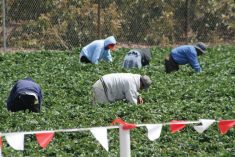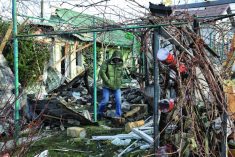Geo-exchange systems come in four configurations:
Open well
Requires a retention well and a rejection well, which generally requires drilling 40 to 250 feet deep, and that raises the spectre of cross-contamination.
“Here in Alberta, when you drill vertically you’re possibly going through five to 10 different kinds of sediment layers,” said Thomas Barr of NuEnergy Systems. “What we have to be careful about is the cross-contamination of your groundwater to your aquifer.”
Closed loop horizontal
These systems require a lot of space, but because wells are only 14 to 22 feet deep, contamination shouldn’t be an issue. However, the shallowness of the wells makes them more susceptible to seasonal temperature changes while heating requires “a lot more pipe.”
Read Also

Grazing ‘sweet spot’ boosts pasture performance
Timing-focused approach to pasture management touted to boost forage growth, livestock gains while also cutting farmer labour and inputs
“The amount of loops you need for cooling systems is half of what you need for heat generation and heat absorption. It’s easier to dissipate heat in the ground than it is to absorb it — there’s only so much energy you can absorb from the ground.”
Vertical closed loop
The most common geo-exchange systems in Alberta come with “a temperature guarantee.”
“Underground temperature is relatively constant between 20 and 200 feet throughout our region,” said Barr.
This makes it easier to calculate “the amount of energy we absorb from the system versus how much we reject from the system on an annual basis. We don’t want to create a system that’s going to freeze over time.”
Pond or lake loop
The most efficient of the geo-exchange configurations because “instead of having to drill all these bore holes or trench-out lines, we can just put the heat exchanger into the water.”
They have their own challenges, however, including having the right to use the water body and the long-term environmental impact.
“You have to quantify how much energy you’re going to strip out to make sure you don’t freeze that body of water. The additional concern is that you make sure you’re not increasing the temperature of that body of water to the point where you affect the ecosystem.” — Jeff Melchior















